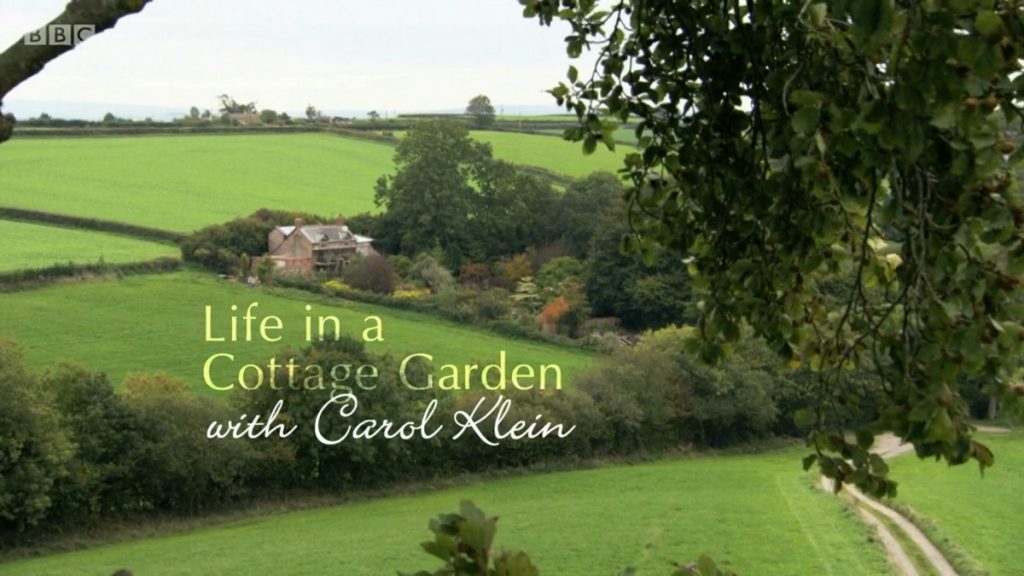Life in a Cottage Garden with Carol Kleine episode 3 – Spring into Summer: In May and June, everything in the garden is surging forwards, full of exuberance. Rather than sitting back to enjoy it all, Carol is planting out sweet peas, picking the first salad leaves and staking perennials.
Blossom drips from the trees, the woodland garden is carpeted with bluebells, and primal ferns begin to unfold. Carol’s opulent oriental poppies pop their hats in the early summer heat and, as the welcome hum of insects returns to the garden, Carol and husband Neil take delivery of their first hive of honey bees.
Plantswoman Carol Klein shares with us a year in her garden at Glebe Cottage in north Devon.
Life in a Cottage Garden with Carol Kleine episode 3 – Spring into Summer
Sweet peas
Grow beautiful and flouncy annual sweet peas (Lathyrus odoratus) from seed each year for their fragrance and for cutting, climbing them over obelisks or twiggy supports in borders or in a cutting garden. Try dwarf varieties as bedding.
Pretty, pea-like flowers come in shades of white, pink, coral, red, violet and blue, some combining two colours. Pastel shades are especially popular and petal edges may be wavy or outlined with a contrasting colour (picotee). Leaves formed of two leaflets combine with tendrils on winged stems. Sweet peas are generally climbing to 2m (6½ft), but some are short and bushy to 45cm (18in).
Sweet peas are easy to grow in any fertile soil that drains easily, in full sun. Feed weekly or fortnightly with a liquid fertiliser and ensure a regular supply of flowers by picking or deadheading. Plants can rot in very wet, heavy soil and will not thrive on excessively dry, poor soil, being prone to powdery mildew. They also won’t flower well in shade.
Staking perennials
Perennials in borders often put on strong lush growth that makes them vulnerable to collapse, especially after heavy rain or strong winds. Staking them early in the season will help avoid disaster. In particular; tall plants and hybrids with large flowers require additional support.
Plant supports should be ideally inserted in spring, before plants have made too much growth. The plants will then grow through the support and hide it from view. Later staking is difficult as plant growth is more advanced and can easily be damaged. It may be necessary to continue tying the stems or raise the level of the used supports as the plant grows.
However, emergency staking is often necessary. Badly bent or snapped stems should be cut off cleanly. Regrowth may follow and the cut flower stems can be enjoyed in the vase. Otherwise, make-shift supports should be set up as soon as possible to minimise further damage and prevent flopped plants smothering neighbouring plants.
